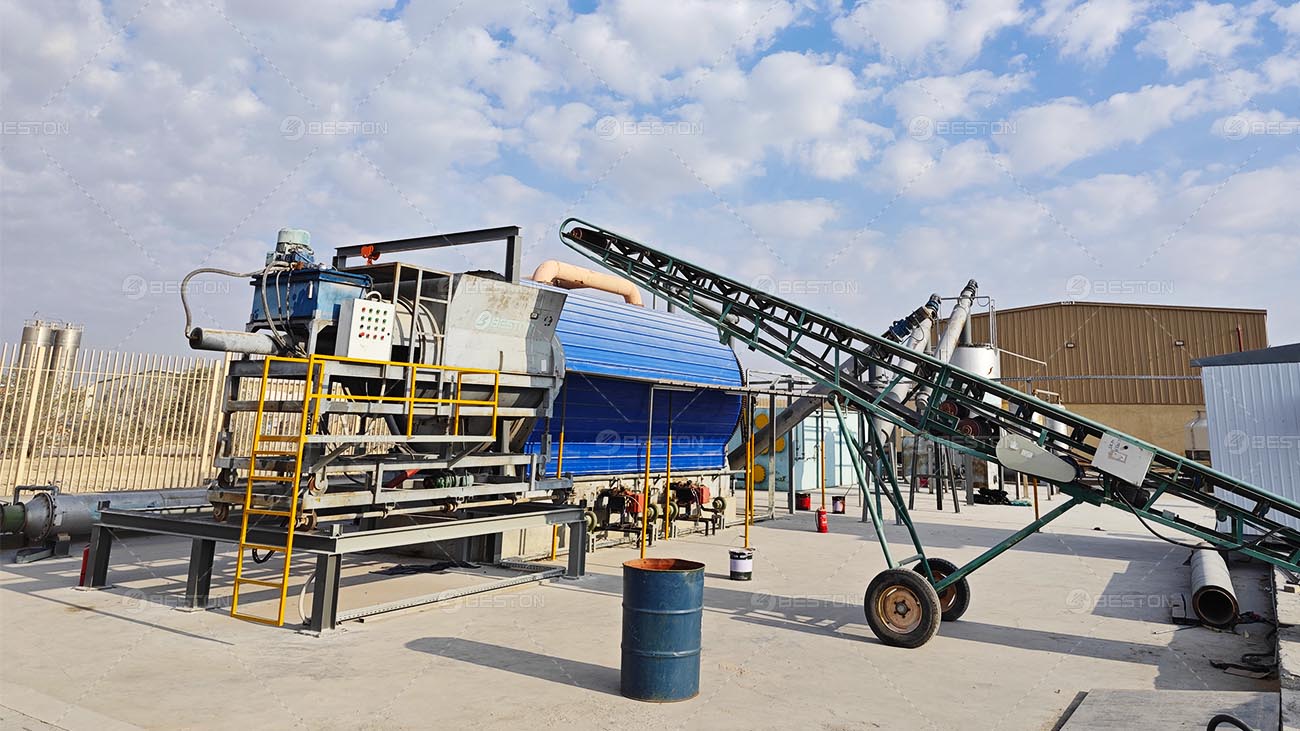In the pursuit of sustainable energy solutions, the juxtaposition of Tyre Derived Fuels (TDF) and Tyre Pyrolysis Oil emerges as a focal point. This article navigates the complexities of these alternative energy sources, unraveling the distinctive features and environmental implications associated with each.
Understanding Tyre Derived Fuels (TDF)
Tyre Derived Fuels (TDF) encapsulate the art of repurposing discarded tires into a valuable energy resource. The process involves shredding tires into small particles, subsequently used as a supplement in cement kilns, pulp and paper mills, and industrial boilers.
Tyre Pyrolysis Plant: The Gateway to Tyre Transformation
At the heart of the alternative energy landscape lies the tyre pyrolysis plant, a sophisticated facility engineered to catalyze the transformation of tires into diverse energy products. The pyrolysis process, involving the thermal decomposition of tires in the absence of oxygen, unlocks the potential for valuable outputs, including Tyre Pyrolysis Oil.

Energy Yield and Efficiency: A Comparative Analysis
Tyre Derived Fuels (TDF): Fuelling Industrial Furnaces
TDF, when employed as an energy source, contributes to industrial processes, providing a supplementary fuel with a calorific value akin to traditional fossil fuels. However, challenges arise concerning combustion efficiency and emissions, necessitating stringent control measures.
Tyre Pyrolysis Oil: Liquid Gold from Pyrolytic Alchemy
In the realm of the tyre pyrolysis plant, the production of Tyre Pyrolysis Oil takes center stage. This liquid treasure, derived from the pyrolysis of tires, boasts a high energy content and a composition conducive to versatile applications, ranging from fuel for industrial burners to a precursor for chemical synthesis.
Environmental Impact: TDF vs. Tyre Pyrolysis Oil
Tyre Derived Fuels (TDF): A Double-Edged Sword
While TDF presents a repurposing avenue for discarded tires, concerns linger regarding emissions during combustion. The release of pollutants, including sulfur compounds and particulate matter, underscores the environmental challenges associated with TDF utilization.
Tyre Pyrolysis Oil: Mitigating Environmental Footprints
The tyre pyrolysis plant introduces a more environmentally conscious alternative through Tyre Pyrolysis Oil. The controlled pyrolysis process minimizes emissions, contributing to a cleaner energy profile. The liquid nature of the oil enhances applicability and reduces the ecological impact associated with TDF combustion.

End Product Applications: Diversification and Versatility
Tyre Derived Fuels (TDF): Cementing Industrial Presence
TDF finds its niche primarily in industrial settings, bolstering combustion processes in cement kilns and industrial furnaces. The application, while effective, remains confined to specific sectors, limiting the breadth of its contribution.
Tyre Pyrolysis Oil: A Multifaceted Energy Arsenal
Contrastingly, Tyre Pyrolysis Oil emerges as a versatile energy arsenal. Its liquid form facilitates seamless integration into existing fuel systems, offering a broader spectrum of applications. From powering generators to serving as a feedstock for chemical industries, the potential applications of the oil transcend the confines of specific industrial niches.
Economic Considerations: A Cost-Benefit Analysis
Tyre Derived Fuels (TDF): Balancing Cost Dynamics
The production and utilization of TDF involve processing costs and logistical considerations. The economic viability hinges on the balance between these costs and the benefits derived from substituting traditional fuels in industrial processes.
Tyre Pyrolysis Oil: Unlocking Economic Value
The tyre pyrolysis plant endeavors to unlock economic value through the production of Tyre Pyrolysis Oil. The versatility of the oil broadens its market scope, potentially positioning it as a lucrative alternative to conventional fuels. The long-term economic gains are contingent upon scalability, efficiency improvements, and market acceptance. You can consult Beston Group Co., Ltd. for more alternative energy solutions.
Regulatory Compliance: Navigating the Legal Landscape
Tyre Derived Fuels (TDF): Compliance Challenges
The use of TDF necessitates compliance with environmental regulations, especially concerning emissions and waste disposal. Stringent adherence to these standards is imperative to mitigate environmental impacts and legal repercussions.
Tyre Pyrolysis Oil: A Path to Sustainable Compliance
The closed-loop and controlled nature of the tyre pyrolysis plant contribute to a more sustainable path to compliance. The minimal emissions and the potential for byproduct applications align with evolving environmental regulations, positioning Tyre Pyrolysis Oil as a more seamless solution to regulatory challenges.
Future Prospects: Charting the Trajectory
Tyre Derived Fuels (TDF): Evolution in Efficiency
The future of TDF hinges on advancements in combustion technology, emission control, and the development of more efficient processes. Innovations in these realms are pivotal for enhancing the efficiency and environmental compatibility of TDF utilization.
Tyre Pyrolysis Oil: Pioneering Sustainable Energy
The continuous pyrolysis plant, as a cornerstone of tire recycling, continues to evolve. Ongoing research and development hold the key to optimizing pyrolysis efficiency, increasing energy recovery, and expanding the spectrum of applications for Tyre Pyrolysis Oil. The trajectory points towards the continued integration of this alternative energy source into mainstream energy landscapes.
Conclusion: Deciphering the Energy Puzzle
In the realm of alternative energy, the dichotomy between Tyre Derived Fuels and Tyre Pyrolysis Oil unfolds a nuanced narrative. While TDF contributes to industrial processes, the tyre pyrolysis plant introduces a transformative approach with the production of Tyre Pyrolysis Oil. The decision between these alternatives hinges on factors ranging from environmental impact to economic considerations. As industries and policymakers navigate the energy puzzle, the tire recycling landscape, shaped by the tyre pyrolysis plant, stands at the intersection of sustainability and innovation.